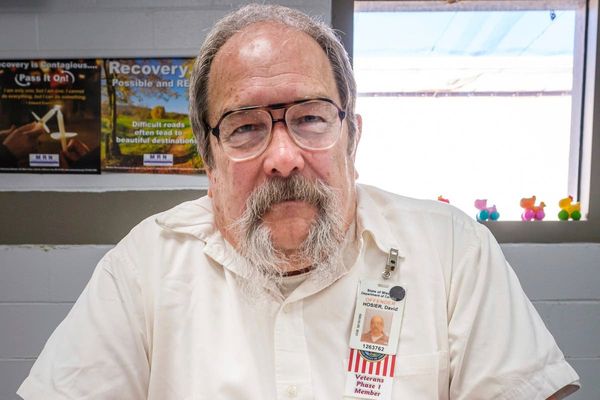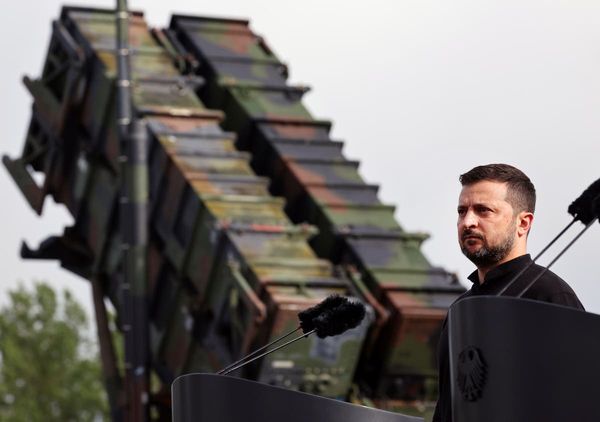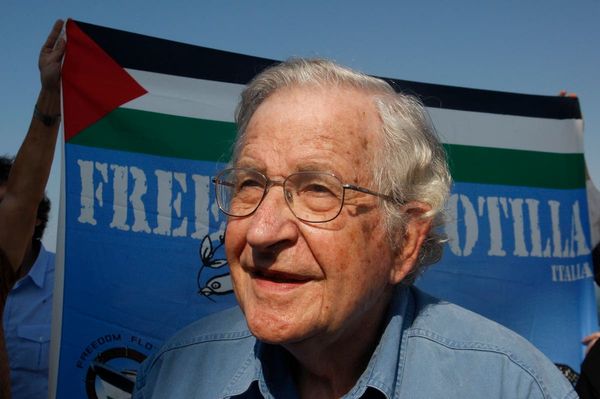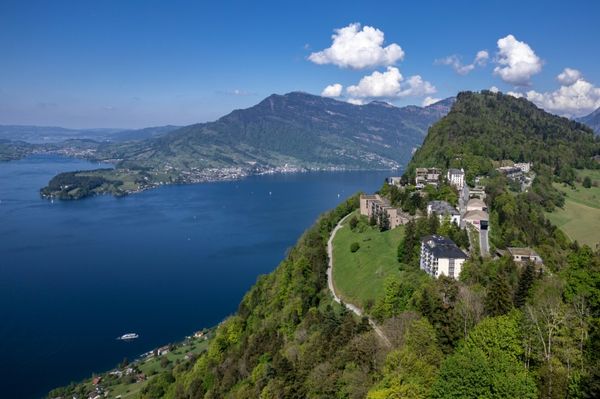
Intelligence warnings went unheeded, no response plan was made and only a handful of police were available to monitor and manage the first day of the Parliament protest, Marc Daalder reports
Special Report: A year-long review of the police response to the Parliament protest, occupation and subsequent riot has concluded with a mixed bag of findings.
On the one hand, police acted with commendable restraint and professionalism during the operation to clear out the occupation on March 2, in the face of violent provocation. Only a handful of allegations of unlawful use of force are being investigated.
On the other, early intelligence failures and poor planning throughout the three-week protest damaged the quality of the overall response, the Independent Police Conduct Authority (IPCA) said.
Despite this, IPCA chair Judge Colin Doherty suggested that even a perfect police response may have still led to the occupation bedding in for a prolonged period.
Is that really true? The 225-page review gives us a detailed look behind the scenes of the largest police response to a protest event since the Springboks tour.
It highlights two stages of the early response, before the occupation had settled in, where police could theoretically have prevented the encampment - the period before anyone had arrived at Parliament and the first day of the protest prior to anyone spending the night.
READ MORE: * 'Splintered realities': How NZ convoy lost its way * The day the music died * Security agencies warned of violence at Parliament
By the morning of February 9, the occupation was well-and-truly settled, with streets blocked, tents erected and a food distribution marquee on Molesworth Street. An attempt to force the protesters off of the grounds less than 48 hours after their arrival failed miserably. The only chance to stop the occupation was on or prior to the first day.
Unfortunately, systemic and individual failures hobbled police's ability to move early. Intelligence about the threat of occupation was ignored, leaving the police with no plan when things went south and too few people to dislodge the protesters. The IPCA's belief notwithstanding, there may have been potential for police to intervene and prevent the protest at one of these stages, had those failures not occurred.
Early warnings
A full week before the twin convoys of protesters arrived in Wellington, police became aware of their initial plans.
On February 1, two separate police districts learned of the convoy - a Wellington intelligence officer was clued in by a state-owned enterprise which in turn was tipped off by a member of the public, while a Northland intelligence staffer found public mention of the protest.
The Northland intelligence unit sent the information up the flagpole and multiple reports were assembled by national and local teams over the next few days.
A February 3 report assessed the convoy was "likely to occur but not to the scale indicated on social media, or the likes of similar protests seen in Canada". At that stage, truckers had already shut down the Canadian capital of Ottawa for nearly a week. The model for what would play out in Wellington was clearly visible, but thought to be unrealistic.
Other reports came to differing conclusions, however. A Wellington district report the next day noted the Kiwi convoy planners had discussed occupying Parliament grounds, but caveated that similar occupation plans had previously come to nought.
This is fair enough. In November and December of 2021, two separate anti-mandate protests led by Brian Tamaki's Freedom and Rights Coalition had descended on Parliament. These too were framed as convoys and occasionally involved a threat to occupy the grounds, but in both instances the protest dissolved in the afternoon.
That February 4 report from Wellington "included specific comments on how to address the emerging risks, including dealing with the impact on traffic. It drew attention to the possible need for wider government liaison, engagement with protest organisers, and enhanced physical security strategies," the IPCA said.

Over Waitangi weekend (February 5 through 7), police staff continued to monitor communication about the protest, including the coordination as the convoy moved down the country. They said it was likely that 300 vehicles would arrive in Wellington on February 8, though the number could be as high as 1000.
Much of this intelligence went to waste, the IPCA found. Partly, this was because the information was disseminated in updates to a wide range of people, leaving no single person responsible for reviewing it and coordinating a response.
"When vital information of this sort is communicated to a wide range of individuals across the organisation, rather than to a single individual, the obvious consequence is that there is a real risk that no one receiving it will take responsibility for ensuring that it is given proper and timely attention, especially when it is being sent after hours or over weekends," the IPCA said.
As the convoy drew nearer, intelligence staff saw more and more discussion of a possible occupation. However, this was offset by other comments seeking or offering separate accommodation in Wellington.
While the supervisor of the Open Source Intelligence team at police said he thought the intent to camp at Parliament wasn't solidified until the evening of the first day of protest, a report from 10:31pm the previous evening warned "it is likely, based on the support shown to the convoy participants so far, that the convoy could sustain a week or more of occupying central Wellington should the organisers request it".
As with the others, this warning went unheeded.
Planning failures
This was the first stage where police might have had the chance to intervene and prevent the occupation. Had they reviewed and appropriately responded to these warnings, would things have turned out differently?
The IPCA says no and it's probably right.
"It is not clear that higher level consideration of the intelligence and a greater precautionary approach to risk would necessarily have brought about a different operational response," the report said.
While "it would be easy to conclude that police missed an opportunity to cut off the occupation before it started [...] we agree with police that such an ultimate conclusion cannot so readily be drawn. Even with the benefit of hindsight, proper consideration of the intelligence could well have led to a decision that the benefits of closing the roads around Parliament outweighed the costs of the consequent disruption to the Wellington community or the risks that the convoy would instead block other critical arterial routes (as had been done in the Canadian protest). It may well be that proper consideration of the intelligence would therefore not have resulted in different decisions or affected the trajectory of the occupation."
After all, the two previous anti-mandate "convoys" had fizzled out. Sure, things were different in Canada - but Canada is a different country. Had police more robustly considered the available intelligence and chosen to still allow the protest to take place, that would have been a completely reasonable decision. In fact, barring the protest outright may well have backfired, appearing unnecessarily totalitarian.
Where the failure to review the intelligence had the greatest impact was not in that first stage, therefore, but in the police's readiness to prevent the encampment in their one realistic opportunity to - on the first day of the protest.
The IPCA found no operation order (police jargon for response plan) was developed for the protest. This was a notable departure from the approach with the previous two events. The December anti-mandate protest involved a 35-page operation order and 120 staff rostered to police the event, including some from other districts. The November operation order, which Newsroom has obtained under the Official Information Act, was 27 pages long.
"We have been unable to discern any good reason why the pending February 2022 protest should have received less planning consideration. A plan might have looked much the same as that for December 2021, but one should have been considered, prepared and disseminated," the IPCA said.
On February 4, police communicated that no operation order was needed. While that may have been reasonable based on the information held at the time, the IPCA said, more information was available by the day before the protest which should have triggered the development of a response plan. That information included the 300 to 1000 vehicles anticipated to descend on Wellington.
"Although intelligence is not an indication of what will occur, but what might occur, the non-escalation of the intelligence reports and the consequent failure to determine the initial response at district operational supervisory level suggest an under-estimation of the potential risk that the anticipated protest posed to police, Parliament and the community."
This lack of prior planning meant a comically insufficient number of police staff were available to monitor and manage the protest on the first day. Only 16 road police, five uniformed patrol officers and a handful of other ancillary staff were rostered for the day of the convoy, compared to more than 100 for the December protest.

'It looks like everyone is leaving'
At 6am on February 8, a protester purporting to be the organiser of the convoy contacted the Wellington District Command Centre (DCC) and said the first vehicles would soon be arriving. She said there would be food for protesters, a PA system and potentially tents for shelter. There was a code of conduct for protesters, she told police, and they should ring her if there were any issues.
Later in the morning, an inspector and a few uniformed police staff from the Police Support Unit (which deals with protests) visited Parliament and told the DCC "that there were no issues".
Police intelligence officers were also on the ground, but only provided a written update at 5pm instead of any oral updates throughout the day.
The head of Parliamentary Security told the IPCA "he was there all day and there was no effective police presence, 'just us [Parliamentary Security] really'. The inspector came to see him during the morning and justified the absence of police by saying: 'I've got a couple of police nearby if you need me. But we're not going to stay here. We don't want to antagonise the situation.'"
As a result, staff at the command centre had no real sense of how the protest was developing as the day went on.
"We do not think that the DCC, the operations support manager or the duty inspector took sufficient steps to examine the reliability of the information upon which they were making their assessment," the IPCA concluded.
From early in the day, according to the head of Parliamentary Security, "the protesters were all over the parliamentary forecourt and grounds, starting to put up structures and tents, making their intentions quite clear, and not complying with any sort of request from his team". He called police for assistance multiple times throughout the day, but they went unanswered until the duty inspector visited at 4.30pm.
By this time, it was increasingly clear that this wasn't going to fizzle out like the last two protests. As early as 1:20pm, a local resident told the IPCA, it was obvious the protesters were intending to stay. This was when they set up the marquee on Molesworth Street.
None of this was clear to police, however. They were reassured partway through the day when they spoke to the convoy organiser and were told the protesters were planning to leave at the end of the day.
Command centre staff saw through Parliament's cameras that there were only around 50 people left on the lawns at 4pm.
As late as 4.30pm, the duty inspector told the operations support manager that the protest was beginning to empty out. That manager then told the local controller, in charge of the operation for the day, "it looks like everyone is leaving". The controller replied, saying "he had also been updated and that everything was fine. On that basis, the operations support manager left work and went home."
The golden hour
The first warning came at 5pm, when intelligence officers deployed at the protest finally provided their written report to central command.
"There is an intelligence gap as to how long protesters intend to stay at Parliament. Open source reporting suggests the protesters are planning for an extended stay with catering planned for 500 persons for a week. [A location in Thorndon] has been shared as the convoy HQ, and the source of catering," they said.
"At the time of writing, an estimated 400-500 remain at Parliament grounds. Groups range from families having picnics to groups consuming alcohol and cannabis. A small number of tents are in place across the grounds."
The IPCA said this information "might have led to a different assessment [of the situation by command] if it had been available earlier".
All available resources within Wellington district were needed just to prevent the protesters from breaching Parliament buildings overnight.
Around 4.30pm, the duty inspector walked to Parliament to answer the head of security's repeated calls for assistance. He noticed five tents on the grounds, he later told the IPCA.
He met with then-Speaker of the House Trevor Mallard, as well as the head of Parliamentary Security, and the situation had deteriorated by the time he left.
"The Cenotaph area was full of protesters, there were more than 30 tents with barbecues and banners, and Lambton Quay and Molesworth Street were four deep with protester vehicles. He promptly rang the local controller to advise that there was a problem. He also rang the operations support manager at about 6.30pm, telling him that some people had set up tents on Parliament lawns and he needed to come in and 'sort it out'."
The manager, who had left work after saying the protest was ending, had to return to town from his home in the Hutt Valley. On the way, he called for assistance from the Police Support Unit, which specialises in dealing with protests.
By the time he got to Wellington, there were 20 tents on Parliament lawns and he later said he didn't have "anywhere near enough staff to deal with that on the night".
The local controller walked to Parliament and told Mallard that he couldn't clear the grounds that night: All available resources within Wellington district were needed just to prevent the protesters from breaching Parliament buildings overnight.
This was the golden hour - the one opportunity police had and missed to stop the occupation. The protesters had yet to start the occupation. Perhaps a well-resourced and -planned operation could have dislodged them before the encampment took root.
The IPCA disagrees, saying police lacked the capacity and the legal authority to clear the grounds.
But that lack of capacity was a result of the intelligence and planning botch-ups from earlier, with no additional staff rostered and no response plan in the event of an occupation. And Mallard, as the legal occupier of Parliament, had asked the police to clear the grounds of trespassers who had violated Parliament's rules against setting up tents and other structures.
It was a perfect confluence of mistakes and failures.
Police intelligence knew an occupation was possible, but no one higher up planned for that eventuality. On the day, police were flying blind until well after the protesters had begun bedding in. By the time they realised what was happening, they didn't have enough officers to stop it.
In retrospect, the IPCA found, "Undue reliance appears to have been placed on the protester who was in contact with the DCC and purported to be the nominated representative for Convoy 2022. The infrastructure that quickly appeared in Parliament grounds following the erection of tents, including a commercial kitchen, demonstrates a significant amount of advance planning for a lengthy occupation.
"We do not know whether the organisers of Convoy 2022 were responsible for that planning, but there was at least a strong possibility that the nominated representative of Convoy 2022 was either unaware of the full intentions of the organisers or was deliberately misleading police."

If there was a single moment in which the events of the next three weeks could have been prevented it was in the afternoon and evening of February 8. But police found themselves under-resourced and uninformed, in the face of an opponent that had clearly planned to stay for some time.
Prior intelligence warnings about that level of preparation had gone unnoticed and the IPCA said a culture of complacency around protest in the Wellington district meant that even the police planning that had gone into responding to previous anti-mandate protests wasn't replicated in February 2022.
As a result, the Parliament convoy morphed from a protest into an occupation, which stayed put until the fiery end.







